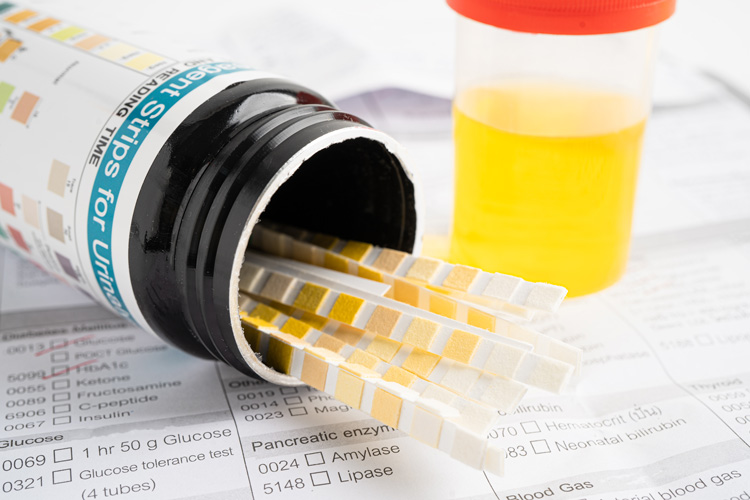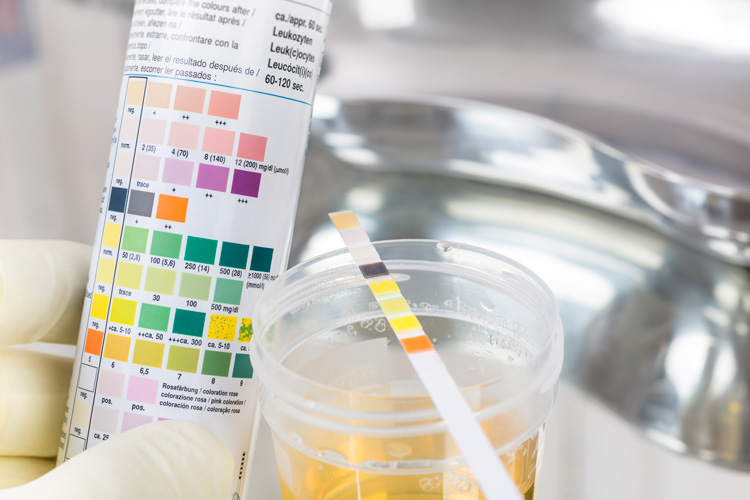Urinary tract infections (UTIs) are common infections that can affect anyone, but they’re more prevalent among women because of their anatomy.
If you suspect having a UTI, this comprehensive guide will walk you through the entire process of using a UTI test kit, from understanding its components to interpreting the results and knowing what steps to take afterward.
What components are included in your UTI test kit?
Most of the time, here are what you’ll find in your UTI test kit:
- Test strips
- Instructions for use
- Colour chart for interpreting results
The test strips have special pads with chemicals that react to the presence of UTI indicators, which include:
- Bacteria
- Leukocytes (white blood cells)
- Nitrites
What you’ll need for your UTI test kit
Aside from the test kit and its content, here’s what you need to perform a UTI test at home:
- A clean container to collect a urine sample
- A timer or stopwatch
- Clean wipes or tissues
With these, you can collect the sample properly and read the test strip at the correct time after dipping it in the urine sample.
How do UTI test strips function?
UTI test strips work by detecting the presence of nitrites and leukocytes in the urine. The test strips have pads that change colour when they detect the presence of these substances.
Healthy urine has nitrates, but if you have UTI, the bacteria will convert the nitrates into nitrite. Meanwhile, your body produces leukocytes as part of your immune response to infection.
At what point should you consider taking a UTI test?
Consider taking a UTI test if you experience these symptoms:
- Burning sensation during urination
- Frequent urination
- Urgency to urinate
- Cloudy or strong-smelling urine
- Pelvic pain
Aside from this, here are a few situations where it might be a good idea to take a UTI test:
- You’ve had a UTI before
- You’re at a higher risk of developing a UTI
- You feel like something is off with your urinary system
What is the procedure for conducting a UTI test?
Here are the steps that you have to follow when conducting an at-home UTI test.
- Wash your hands thoroughly with soap and water to ensure they’re clean before handling the test kit.
- Collect a midstream urine sample in a clean and sterile container.
- Remove one test strip from the container, being careful not to touch the reactive pads.
- Dip the test strip into the urine up to the test pad level for the time specified in the instructions.
- After removing the strip, start the timer and wait for the time specified in the instructions.
- Compare the colour change of the pads on the strip to the colour chart provided in the kit.
- Safely dispose of the used test strip and collection cup according to the instructions provided in the kit.
How do you interpret the results of UTI strips?
Interpreting the results of your UTI test depends on what shows on the test pad.

In the case that the results indicate a UTI, what should be your next steps?
The test pads will change colour according to the presence and concentration of nitrites and leukocytes. A positive result for either nitrites or leukocytes (or both) suggests a UTI.
Consult with your healthcare provider for confirmation through a laboratory urine test and to discuss treatment options. They may prescribe antibiotics to clear up the infection.
At the same time, manage your symptoms by drinking enough water, taking over-the-counter medication or applying heating pad to your abdomen.
What steps to take if the UTI test results are unclear?
If the results are difficult to interpret or if you’re unsure, you can consider retesting with a new strip. This time, follow the instructions carefully for accurate results.
If you’re still unsure or if you have concerns, it’s best to consult with your healthcare provider for further testing and guidance. They can provide guidance on how to proceed, whether it’s retesting, seeking further testing or discussing your symptoms and medical history to determine the next steps.
If the results indicate no signs of a UTI, what should be your course of action?
If your test strip doesn’t show any sign of a UTI but you’re still experiencing symptoms, consult with your healthcare provider as well. Some UTIs may not produce detectable levels of nitrites or leukocytes in the early stages.
What factors can influence the results of a UTI test?
These factors can affect the accuracy of UTI test strips.
- Improper timing. Not reading the test strip at the correct time can lead to inaccurate results.
- High levels of vitamin C or certain foods can affect the accuracy of the test.
- Diluted urine from excessive fluid intake can reduce the concentration of nitrites and leukocytes, which can lead to false negatives.
- User error. Errors in performing the test, such as misinterpreting the results or using expired test strips, can also affect the accuracy of the test.
- Presence of interfering substances. Certain substances present in the urine, such as blood, protein or medications, can interfere with the test results and lead to false-positive or false-negative results.
- Collection technique. Contaminating the urine sample with bacteria from your skin or genital area can lead to inaccurate results.
- Underlying medical conditions. Underlying medical conditions, such as kidney disease or diabetes, can affect the composition of the urine and influence the results of a UTI test.
Key takeaway
UTI test kits provide a convenient way to detect a potential UTI from the comfort of your home. However, keep in mind that while these tests can be a helpful screening tool, they’re not a substitute for professional medical diagnosis and treatment.
Understanding how to properly conduct the test and interpret the results can empower you to take charge of your urinary health and seek timely medical care when necessary.
Always consult with a healthcare provider for a confirmed diagnosis and appropriate treatment plan.



















































